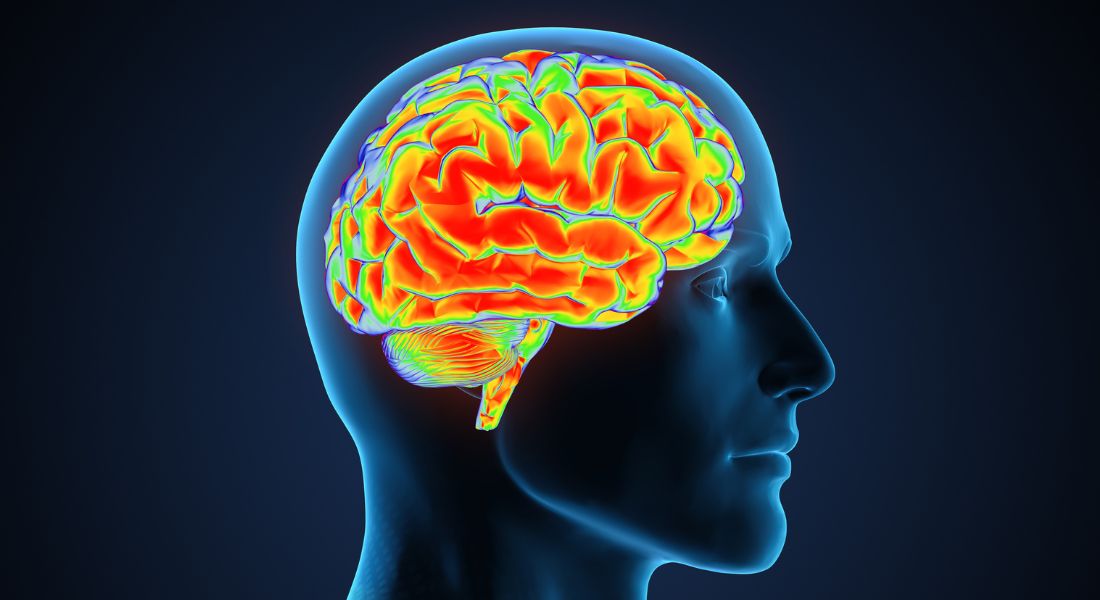Excessive brain fluid can lead to risky surgery. New research seeks to change that
Researchers from the University of Copenhagen have discovered that fluid does not necessarily enter the brain the way one thought. According to one of the researchers behind the study, the result may lead to fewer major brain operations.

Each year, thousands of Danish children and adults undergo major and often repeated brain surgery due to excessive water – or brain fluid – in the brain. The condition can be life-threatening and a result of an innate disorder, brain haemorrhage or head injury. But this type of surgery is associated with various risks and side-effects.
However, research from the University of Copenhagen suggests that some brain surgery may be replaced by medical treatment.
“For many years now, we have assumed that water enters the brain through osmosis (Editor’s note: Osmotic movement of water occurs when there are more particles on one side of a water-permeable membrane than on the other), which is the case in parts of the kidney. However, this study suggests that brain fluid, and therefore the pressure inside the brain is instead controlled by certain transport proteins,” says Professor Nanna MacAulay from the Department of Neuroscience at the University of Copenhagen, who is one of the researchers behind the study.
For centuries, we have known that brain fluid – more specifically, half a litre a day – is transported in and out of the brain. We have also known that too much water in the brain can result in high intracranial pressure, a potentially life-threatening condition. However, so far it has been a mystery how water enters the brain.
“Our vision is to make it possible to prevent water from entering the brain and thus in some cases avoid neurosurgery altogether. But to stop water from entering the brain, we need to know how it is transported into the brain,” Nanna MacAulay explains.
Risky brain surgery
“We aim to be able to explain how water enters the brain. Previous research has demonstrated that some transport proteins are able to transport water, and that they do so without the osmotic gradient. We believe it is this type of transport that produces brain fluid,” says Nanna MacAulay.
Transport proteins help transport ions into the brain. As part of the new study, the researchers have examined four types of transport proteins, and the results are clear.
Our vision is to make it possible to prevent water from entering the brain and thus in some cases avoid neurosurgery altogether.
“We can tell that three of the proteins are responsible for approximately 30 percent each. This means that if we wanted to reduce intracranial pressure, we should focus on these three proteins,” Nanna MacAulay explains and continues:
“That is, if we turn some of the ‘water taps’ in the brain on or off, we can adjust the intracranial pressure. No matter whether the build-up of brain fluid is a result of excessive amounts of water entering the brain or its inability to exit the brain fast enough, we would be able to turn a tap off, reducing the amount of fluid in the brain.”
Today, doctors reduce intracranial pressure by inserting a permanent drain into the fluid-filled part of the brain to lead the excess water into the abdomen of the patient or by temporarily removing part of the cranium to make room for the brain to swell. This is what the new study seeks to change.
Still a lot of missing pieces
More research is needed to determine how the three proteins should be modulated to produce the right medicine. It may not be a good idea to target all types of transport proteins, as some also play a role in other parts of the body.
“This study is the first step on the way. We still have some way to go to identify all the transport proteins involved. By describing their individual contribution to the process, we know which proteins to target. If a given protein only plays a minor role, it is not the one we wish to target. We prefer to focus on the larger ‘brain water taps’,” says Nanna MacAulay.
It makes good sense to focus on finding the missing pieces in the human brain puzzle, as there is still a lot the scientists do not know about the brain water.
“We are half a century behind the kidney physiologists, who are able to turn the ‘kidney water taps’ on and off. There is a lot we do not know about the fluid production in the brain, and therefore, our goal is to describe these processes. Our vision is to make it possible to adjust the amount of fluid in the brain through pharmacological treatment, and this study is a step in the right direction,” says Nanna MacAulay.
The study, “Membrane transporters control cerebrospinal fluid formation independently of conventional osmosis to modulate intracranial pressure”, has been published in Fluids and Barriers of the CNS and is available here.
Contact
Professor Nanna MacAulay
+45 30 26 70 26
macaulay@sund.ku.dk
Journalist and Press Officer Sascha Kael Rasmussen
+45 93 56 51 68
sascha.kael.rasmussen@sund.ku.dk
